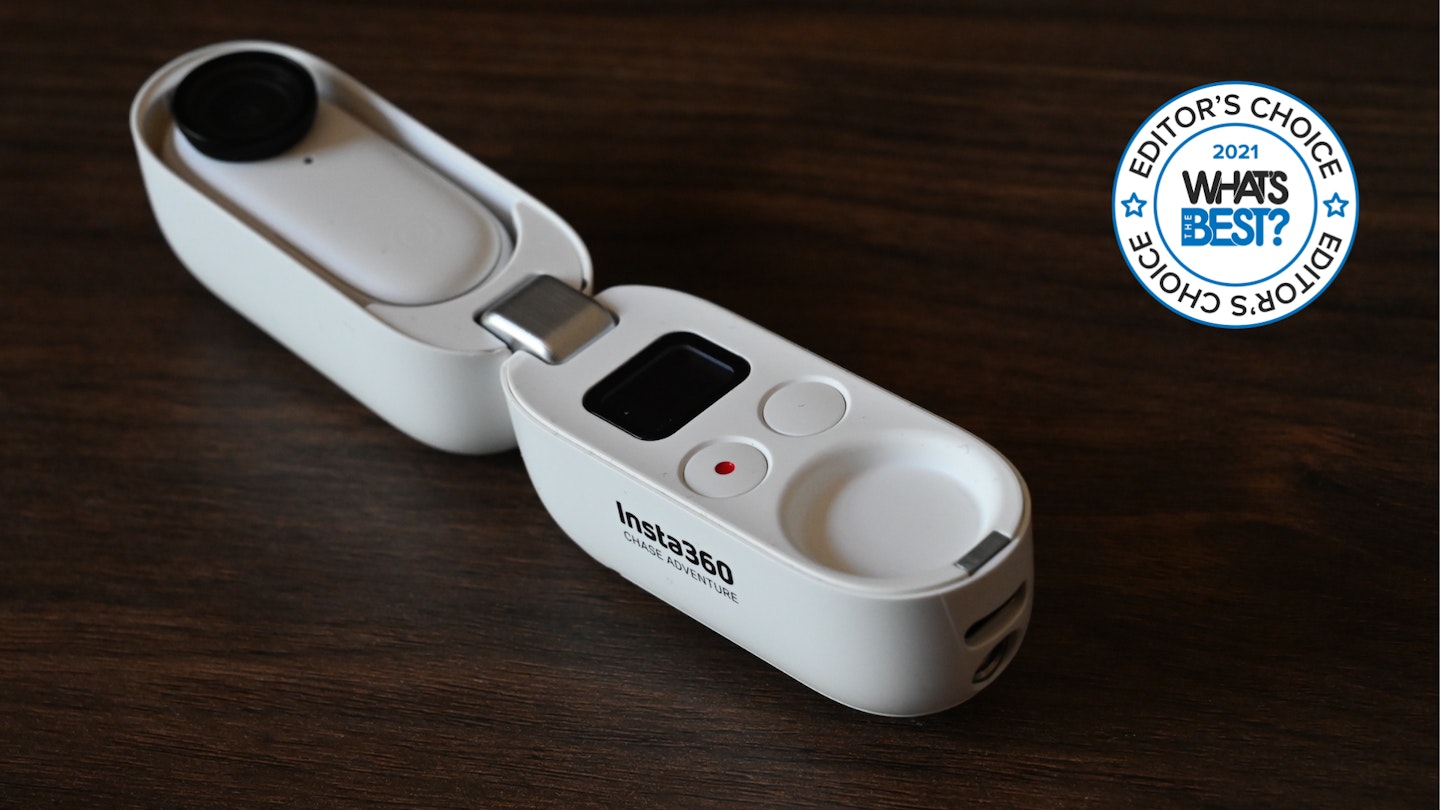GoPro might be synonymous with action cameras, but Insta360 is quickly making a name for itself. The One R – which we've previously reviewed - is an intriguing modular system with unique capabilities, and now it’s followed up by this, the GO 2.
Compact, no larger than a pack of chewing gum and capable of doing some things that no GoPro – or other action cameras can – it’s a marvel of modern technology. But is it worth buying? What's The Best's Curtis Moldrich has ridden with it, driven with it and even jogged with it to find out.
Editor's Choice: Best lightweight action camera
Build quality and durability

Action cameras look relatively similar to each other, but the GO 2 has more in common with a pair of true wireless headphones. The camera itself is the size of a USB dongle, but it’s contained in a charging case that also includes its own screen and a fold-out tripod. All action cameras are packed full of innovative, minute technology – but the Insta360 GO2 takes things a step further.
Just like a pair of true wireless headphones, the GO 2 magnetically snaps into its dock to charge, and with the tripod enabled you can use it for recording tabletop videos. It’s durable too and includes a lens guard, just like you’d expect from a large camera.
However, the tiny Insta360 really comes into its own when you’re on the go. Small enough to fit in the palm of your hand, it comes with GoPro style mounts – but it can also be worn. Included in the box you’ll find a ‘magnetic medallion’ which you wear under your clothes while snapping the GO 2 in place. It can also be worn on caps or pockets using the included easy clip.
There’s no screen or buttons, but you won’t need them; the GO 2 works with Insta360’s mobile app, so you can frame your shots and start recording with your smartphone. Alternatively, a squeeze of the GO 2 gets the digital tape rolling, while a double-tap takes a picture.

Specs and performance
You won’t find 4K in the GO 2’s specifications, but you will find 2560x1440 footage captured at a serviceable 30fps, and smoothed with Insta360’s impressive FlowState Stabilization software. If you want HDR footage, you can still get ‘2K’ footage – but at 24fps. Elsewhere, Timeshift and Timelapse features are available, but both max out at the GO 2’s 2560x1440.
However, that’s only half the equation, as the GO 2’s strongest suit is its minute size. At just 27g, the GO 2 is barely there, and not at all noticeable when being worn or mounted to a helmet or cap. The weight is also extra peace of mind if you’re mounting it with adhesive strips; we were less worried about the GO 2 falling off than we were with more substantial action cameras.
As you’d expect, footage from the GO 2 was crisp, but couldn’t reach the definition or clarity of larger actions cameras like the Hero 9 or Insta360’s own One R. Still there was little difference when viewed on a smartphone: colours were as vibrant as larger, more conventional action cameras, and the sound was usable too.
Stamina is where the GO 2 may falter for some users. However, we found the 32GB of onboard memory sufficient for short, 2K clips and we got around 30 to 40 minutes of use per charge. After that, charging the GO 2 up again was as simple as placing it back within its dock.
.png?auto=format&w=1440&q=80)
Low light footage was decent, and taking it from the camera was simple too: Insta360’s stabilisation software performed as well as it does for the One R, which meant it was easy to trim and edit clips, export movies and even remotely trigger recording.
Verdict
The GO 2is one of the most interesting, innovative action cameras we’ve tested in a while, and for some users, it’ll be the holy grail of cameras. Small, light, and capable of producing sharp footage, it’s ideal for capturing short clips from unique perspectives.
Its 2K footage, battery life and shallow 32GB memory make it a perfect fit for those interested in social media – though it could be used for lots more.
Score: 4.5/5
What to read next:
FlexiSpot E7 Standing Desk review: the future of working from home?
Curtis has worked in the technology sector for the last few years, reviewing and testing the best audio gear, laptops and gadgets at titles including The Telegraph, Mixmag and Expert Reviews. Now the online editor of CAR magazine, he's a keen sim-racer, too.
Subscribe to the What’s The Best Newsletter to keep up to date with more of the latest reviews and recommendations from the What’s The Best team.

